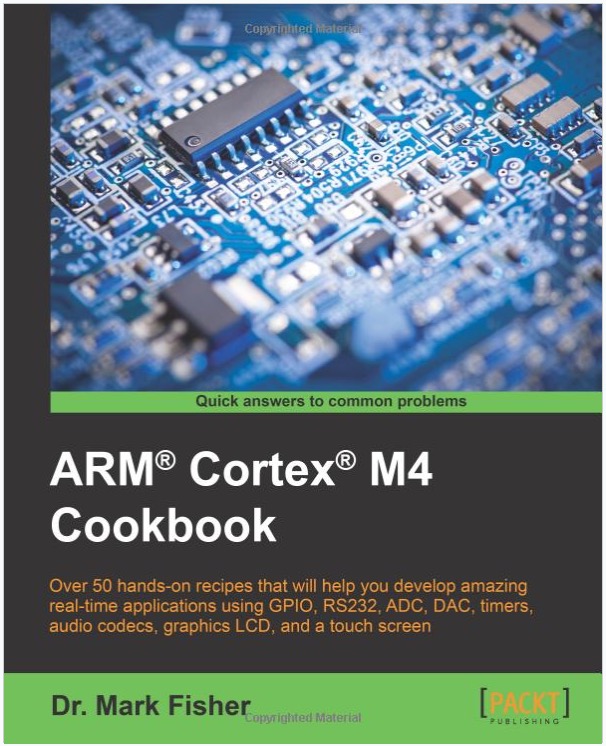Recent Posts
ARM Cortex-M4-Based Microcontroller With Complete Hardware Cryptography
Posted by on
 The CEC1702 hardware cryptography-enabled microcontroller is now available from Microchip Technology, a provider of microcontroller, mixed-signal, analog and Flash-IP solutions. The CEC1702 is designed to address the increasing need for security measures, such as secure boot, driven by the continual growth of Internet of Things (IoT) applications.
The CEC1702 hardware cryptography-enabled microcontroller is now available from Microchip Technology, a provider of microcontroller, mixed-signal, analog and Flash-IP solutions. The CEC1702 is designed to address the increasing need for security measures, such as secure boot, driven by the continual growth of Internet of Things (IoT) applications.
The CEC1702 is an ARM Cortex-M4-based microcontroller with a complete hardware cryptography-enabled solution in a single package. This programmable 32-bit microcontroller offers encryption, authentication, private and public key capabilities and allows customer programming flexibility to minimize customer risk. The device’s hardware cryptographic cipher suite reduces compute time by orders of magnitude over software solutions, and, as an example, provides 20-50x performance improvement for PKE acceleration as well as 100x improvement for encryption/decryption.
Protecting system integrity has never been more important. Whether it’s being used as a security coprocessor or a standalone microcontroller, the CEC1702 delivers defense against attacks, including:
- Pre-boot authentication of system firmware: Providing an immutable identity and a root of trust to ensure that the firmware is untouched and hasn’t been corrupted
- Firmware update authentication: Verifying that the firmware update has not been corrupted and is from a trusted source
- Authentication of system critical commands: Attesting that any system-critical command is from a known source with authorization to make the given change, preventing potentially devastating actions
- Protection of secrets with encryption: Safeguarding code and data to prevent theft or malicious activities
- Download/View the Microchip CEC1702 Data Sheet (PDF)...
- More Information...
ARM® Cortex® M4 Cookbook
About This Book
- This book focuses on programming embedded systems using a practical approach.
- Examples show how to use bitmapped graphics and manipulate digital audio to produce amazing games and other multimedia applications.
- The recipes in this book are written using ARM's MDK Microcontroller Development Kit which is the most comprehensive and accessible development solution.
Who This Book Is For
This book is aimed at those with an interest in designing and programming embedded systems. These could include electrical engineers or computer programmers who want to get started with microcontroller applications using the ARM Cortex M4 architecture in a short time frame. This book's recipes can also be used to support students learning embedded programming for the first time. Basic knowledge of programming using a high-level language is essential but those familiar with other high-level languages such as Python or Java should not have too much difficulty picking up the basics of embedded C programming.
What You Will Learn
- Use ARM's uVision MDK to configure the microcontroller run time environment (RTE), create projects and compile, download, and run simple programs on an evaluation board
- Use and extend device family packs to configure I/O peripherals
- Develop multimedia applications using the touchscreen and audio codec beep generator
- Write multi-threaded programs using ARM's real-time operating system (RTOS)
- Write critical sections of code in assembly language and integrate these with functions written in C
- Fix problems using ARM's debugging tool to set breakpoints and examine variables
- Port uVision projects to other open source development environments
In Detail
Embedded microcontrollers are at the core of many everyday electronic devices. The so-called Internet of Things drives the market for such technology, so much so that embedded cores now represent 90% of all processors sold. The ARM® Cortex® M4 is one of the most powerful microcontrollers on the market. The book begins with an introduction to the ARM® Cortex® family and we cover the installation of the ARM® uVision Integrated Development Environment and topics such as target devices, evaluation boards, code configuration, and GPIO. You will then learn about core programming topics. You will find out about advanced aspects such as data conversion, multimedia support, real-time signal processing, and real-time embedded systems. By the end of the book, you will be able to successfully create robust and scalable ARM® Cortex® based applications.
 Loading... Please wait...
Loading... Please wait...

